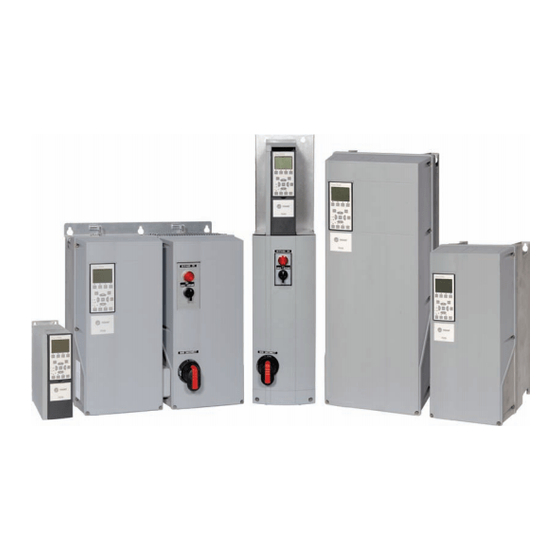
Trane TR200 Preventive Maintenance Instructions
Hide thumbs
Also See for TR200:
- Programming manual (297 pages) ,
- Instruction manual (205 pages) ,
- Operator's manual (86 pages)
Advertisement
1.
PM Checklist
Check
box
Vacuum dust and dirt from heat sink fins
Clean or replace as conditions require intake air filters (125 HP constant
torque models, 150 HP variable torque models and larger have filters
located behind the intake louver panels)
Check ventilation fans for proper operation and clean as needed.
Confirm VFD's ventilation clearances have not been obstructed
Check electrical connections and re-torque as needed. If possible, perform
an IR thermal scan of the VFD's power input and power output.
Check line voltage
Check motor & output phase balance
Inspect DC buss capacitors (older drives)
Record the VFD's parameter settings using MCT-10
Confirm the VFD doors and covers are in place and properly closed
2.
Clean the drive's interior.
a.
Dirt coating drive circuit boards and other components can interfere with proper cooling and
even provide a path for electricity to short out along unintended paths. This can cause erratic
operation and possibly damage to drive components.
b.
Corroded electrical connections can cause excess heat build-up, short circuits, erratic drive
operation, and even component damage.
c.
This should be done after the installation of the drives is complete and before power is
applied to the drive. The main point here is to ensure that no metal filings or other
installation-related dirt are inside the drive or its option enclosure.
d.
If the drive is installed in an area where a lot of construction work will be performed, it is best
to keep the drive covered while it is not in operation. Of course, if it is being used, the drive
must be uncovered so that cooling air can be freely supplied to it. After the construction is
complete it will be important to clean the interior of the drive. Low pressure, clean, dry air or
similar commercial products can be used to clean dirt off of circuit boards. While a vacuum
cleaner can be used to collect falling dirt, it is important to ensure that circuit boards are not
damaged by the use of a powerful vacuum cleaner on the boards. Inspect drive connectors
for dirt or corrosion.
e.
In a normal environment, the drive's interior should be inspected annually and cleaned, if
necessary. In dirty environments, more frequent inspection is required. The level of dirt
found inside the drive can be used to dictate the frequency of inspections and cleanings that
is required.
3.
Clean air filters (if any).
a.
Many TR200 drives have no air filters. However, some sizes and enclosure styles do use
air filters in conjunction with their fan cooling systems. For these drives it is important to
periodically inspect and clean or replace the filter element.
Trane TR200 Drive
Trane TR200 Drive Preventive Maintenance Instructions
Preventative Maintenance Step
Page 1 of 3
Advertisement
Table of Contents

Subscribe to Our Youtube Channel
Summary of Contents for Trane TR200
- Page 1 Clean air filters (if any). Many TR200 drives have no air filters. However, some sizes and enclosure styles do use air filters in conjunction with their fan cooling systems. For these drives it is important to periodically inspect and clean or replace the filter element.
- Page 2 Listen for unusual noises from the fans when they are running. e. The TR200 drives use a heat sink temperature sensor to help indicate if there is a problem with the cooling system. If the drive issues a HEAT SINK OVERTEMP. warning or alarm, check the cooling system carefully.
- Page 3 If it is convenient to access the two halves of the DC bus capacitors, the inspection technique given in “c” and “d” can be performed annually. Otherwise, it is best to simply let the drive’s internal monitoring circuitry described in “b” provide an indication of possible problems. Trane TR200 Drive Page 3 of 3...












Need help?
Do you have a question about the TR200 and is the answer not in the manual?
Questions and answers